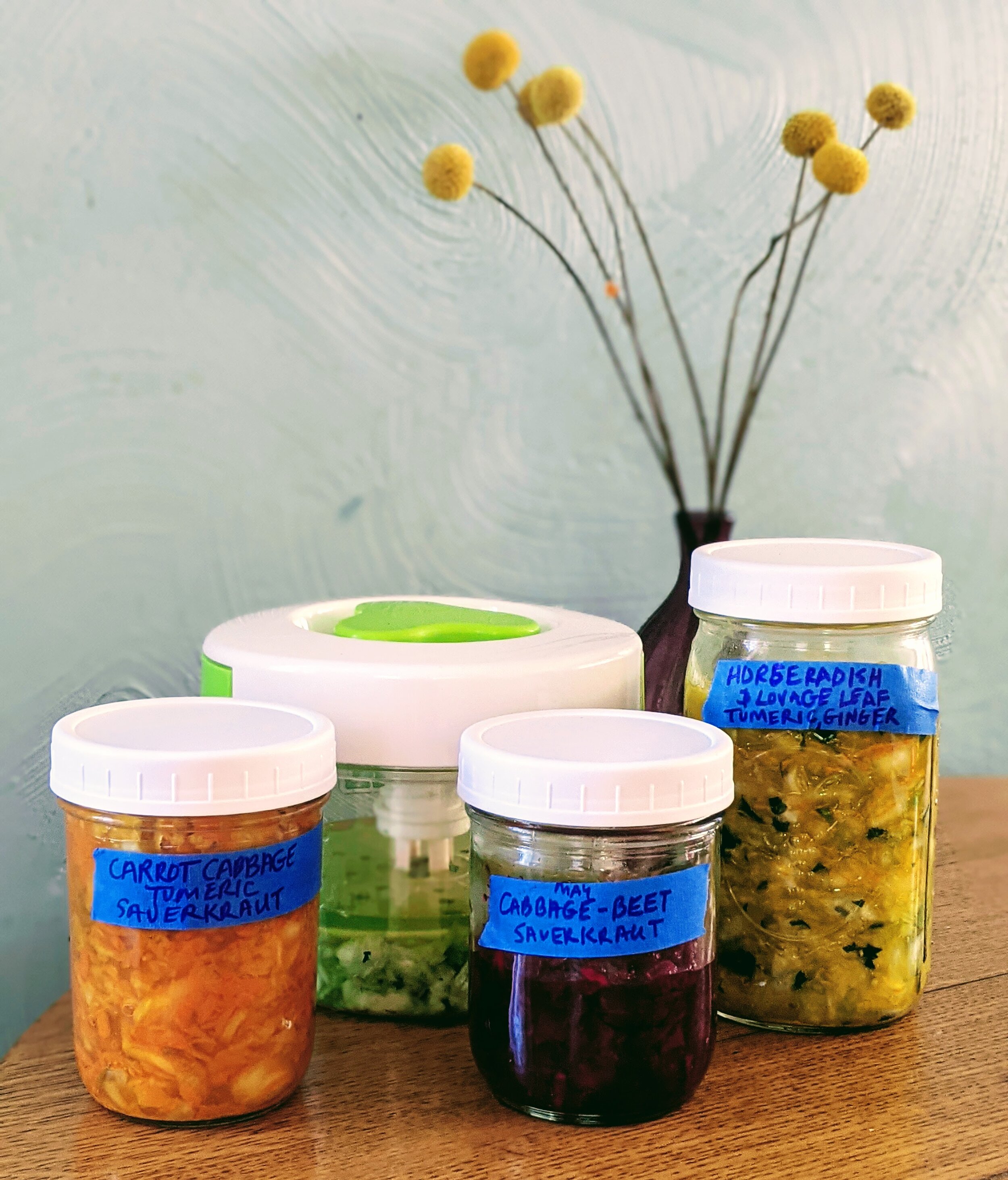Homemade Sauerkraut
In the spring I begin making sauerkraut of all kinds, as this is the time of year when fermentation begins to pick up speed and roll on through the whole summer. Sauerkraut is a lacto-bacteria alchemical process whereby a little salt, some cabbage, and a deep massage create wonderful food for the gut.
After years of being in the health-care industry, I am acutely aware that most people would benefit from creating an environment hospitable to healthy bacteria in their intestines rather than growing those pesky bacteria that cause pain and illness; think leaky gut syndrome and IBS.
There is lots of wonderful information available for those who want the deep inside scoop. One of the sites dedicated to gut health that I recommend is Cultures for Health, however the focus and intent of this blog is to inspire an “I can do that!” feeling and an assurance that in twenty minutes you too can make your first sauerkraut.
Prep:
1 lb (about half of a medium sized) cabbage
1.5-2 tbs. salt per pound of cabbage
1 cabbage leaf
Pint mason jar
Large bowl
Weight
Method:
Thinly slice cabbage and put in your bowl
Add 1.5-2 tsp. salt
With clean hands mix, squeeze, massage the cabbage until your hands are tired. Wash your hands and go do something else for five minutes. Again wash your hands and mix, squeeze, massage the cabbage. Do this a few more times. You are helping the cabbage to release it’s fluids. Soon there will be quite a lot of briny water in the bottom of your bowl. I do this process anywhere between 15 - 20 minutes. The cabbage will be wet and pliable in your hands.
Pour the juice into the mason jar and then add the cabbage, packing the cabbage down with your fist as you go. You want the cabbage to be submerged under the salt water.
Place a clean cabbage leaf over the top and add a weight such as a clean rock to keep the cabbage submerged under the water. Cover jar with a loosely fitted lid. (I don’t use a mason jar lid and ring as the lid can seal to the jar, making it impossible for gas exchange). Or if you don’t have a loosely fitting lid, you can improvise with a couple of layers of clean paper towels and a rubber band.
Leave the jar out on a clean surface for 4-7 days (longer if the weather is cold and the fermentation process is slow). By about day 4, sniff the jar to see how things are progressing and give it a taste (use a clean fork--you don’t want to introduce your bacteria into the batch). Usually by day 5 or 6 the ferment is done. But again, taste and see if it’s ready. It should be a little sour and smelling of sauerkraut.
Cover with a tight fitting lid and store in the refrigerator.
Don’t worry if the sauerkraut bubbles white foam, it’s just the bacteria releasing gases. If you see any colored mold growing on top, gently remove it with a spoon. If the whole batch seems to be infected with mold or smells bad, toss it out. I’ve never had that happen, so if you have an issue, please feel free to reach out to me.
Once you see how easy and wonderful it is to make your own sauerkraut, you’ll be wanting to experiment with different flavors. These are a few of my favorites.
Beets and cabbage sauerkraut
Carrot (or daikon), fresh ginger and turmeric sauerkraut
Lovage and horseradish leaf, garlic sauerkraut
